- Offensive Techniques & Strategies
Defending Cutters
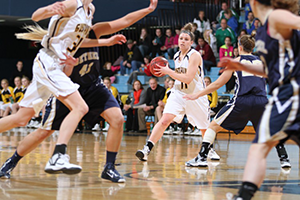
How to defend cutters is another phase of the game that is often times over looked by coaches. However, basket cuts, back cuts and flash cuts have been around since the birth of basketball and are an integral part of every offense today. Players must not only possess a working knowledge how to defend these basic cuts, but also need to develop an attitude and aptitude of anticipating and preventing them.
| "Give &Go" | Back Cuts | Dribble Clear | Weakside Clear Outs | Weakside Flashes |
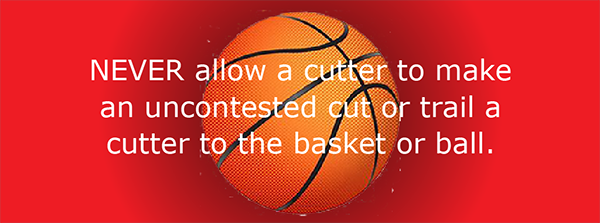

Disrupting Basket Cuts ("Give & Go")
The "Give and Go" basket cut is one of the oldest, yet most admired plays in basketball. When executed successfully, it draws raves from the spectators and coaches alike. However, this simple basket cut should never be allowed. It is a result of careless or lazy defense.
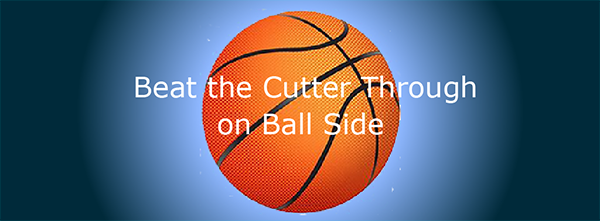
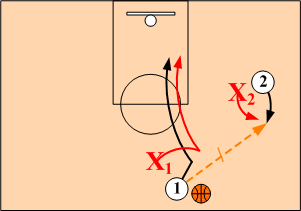
When a ball handler passes the ball and makes a cut to the basket, the defender must jump in the direction of the pass and assume a shoulder to shoulder pass denial position.
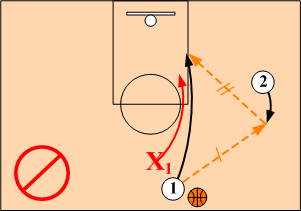
Never allow a cutter a direct cut to the basket. Always jump to the ball and assume a strong pass denial position.
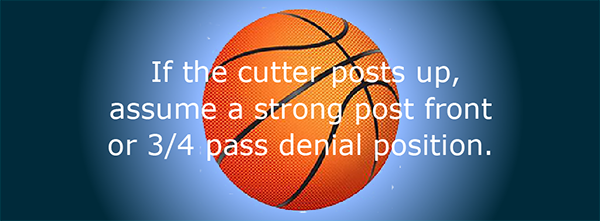

Defending Against Back Cuts
The back cut or "Back Door" cut is the tactic of choice used to counter strong first pass denials. Therefore, defenders should be aware of this tactic and alert to defend it. Defending back cuts requires a team effort. In addition to disrupting the actual back cut, it is also imperative for the "On Ball" defender to pressure the passer and for the helpside defenders to be alert and give support by intercepting or deflecting the pass or by taking a charge.
Shoulder to Shoulder Drop
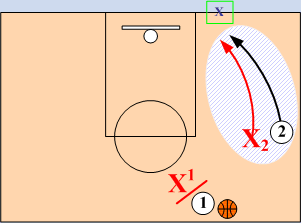
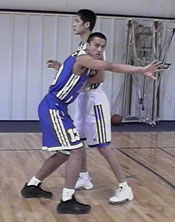
When the opponent back cuts to the basket, the defender maintains an "Ear on Chest" pass denial position using a shoulder to shoulder drop finishing up in a post front. The defender should resist or block opponent's cut to the basket maintaining vision on the ball and force the cutter toward a baseline PushPoint.
Switching "Stop Signs"
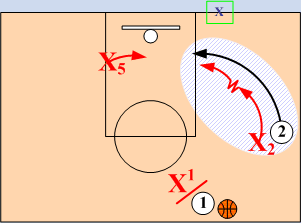
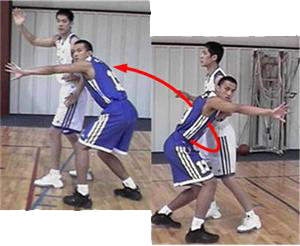
When the defender is beaten on a back cut to the basket, immediately switch "Stop Signs" by extending opposite hand into the passing lane and using a quick head snap. Sprint to catch up and attempt to deflect the pass.
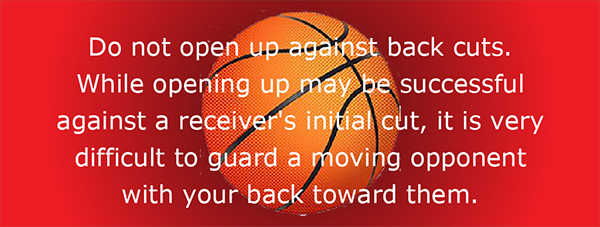
Push to Baseline Pushpoint
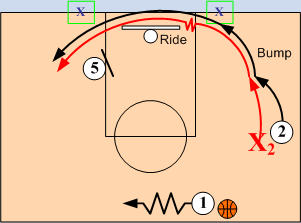
If the opponent continues out to the opposite side of the court, the defender maintains a strong "Ear on Chest" pass denial position and pushes them using an elbow high arm position to a pushpoint the same as if they were a dribbler.
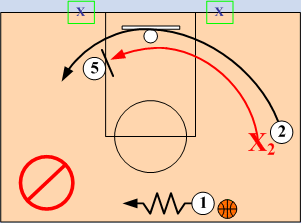
By pushing the cutter to a baseline pushpoint, it will disrupt the offensive flow and negate any weakside down or base screens.

Defending Against the Dribble Clear
The dribble clear is a variation to the back cut. When the ball handler dribbles toward an offensive player, they clear out by making a back cut to the basket. If the back cut is not defended it will result in an easy layup.
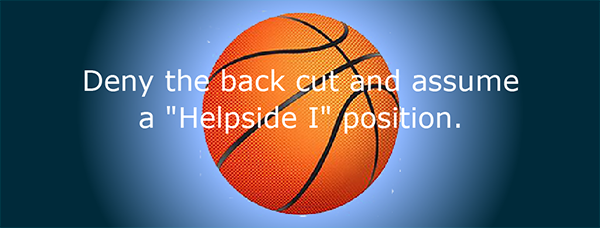
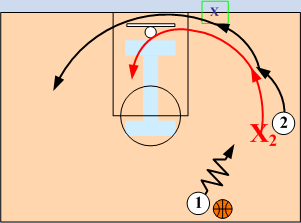
If a ball handler dribbles toward the receiver and the receiver back cuts to the basket, the defender should maintain a pass denial position and make a shoulder to shoulder drop forcing the cutter toward a baseline PushPoint.
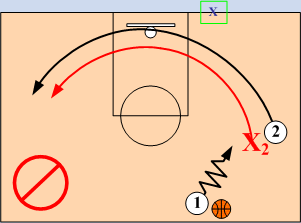
When the receiver goes out to the weakside wing, the defender assumes a sagged off, "Helpside I" defensive position.
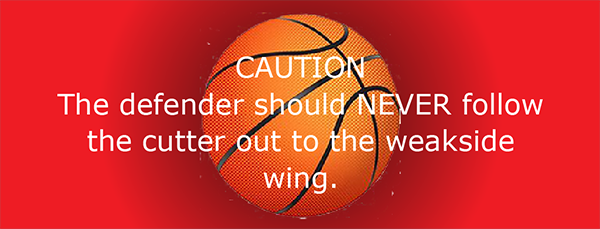

Defending Against Weakside Cuts

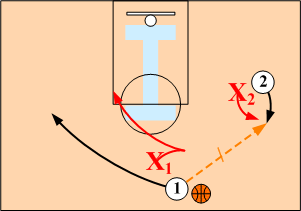
If a ball handler passes and then goes opposite the pass, the defender first moves in the direction of the pass assuming a pass denial position. As the cutter moves to the weakside, the defender then establishes a sagged off, "Helpside I" position.
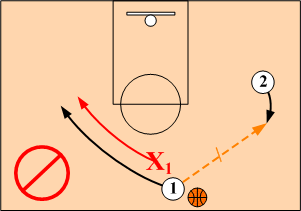
The defender should NEVER follow the cutter out to the weakside wing.
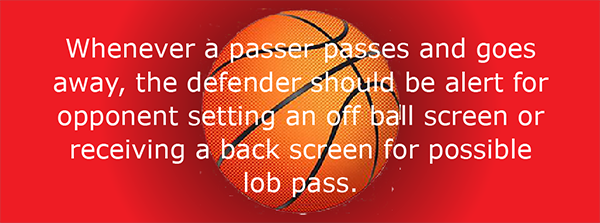

Defending Weakside Flash Cuts
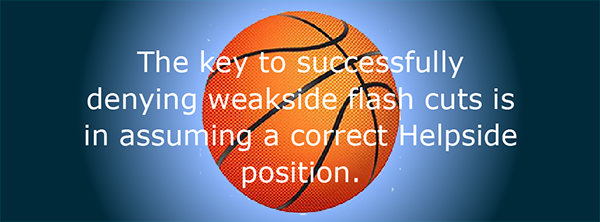
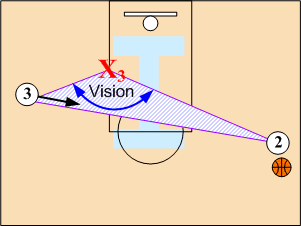
Weakside defenders should play up the passing lane in the same Ball - You - Opponent principle as ballside first pass denials using split vision, seeing the opponent and the player with the ball.
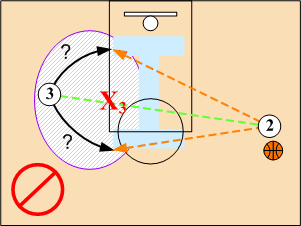
Dictate direction on cuts. Do not give the cutter any options. Helpside defender should assume a position that forces their opponent to cut in front in order to receive a pass.
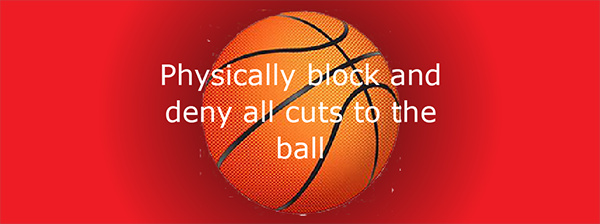
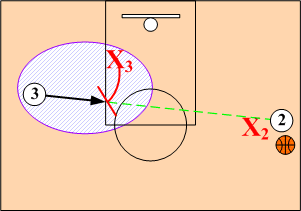
NEVER allow a weakside cutter to penetrate into the three second area of the court. If at all possible, keep them on the weakside. When a weakside player cuts toward the ball handler, the defender should step up and physically block the cutter.
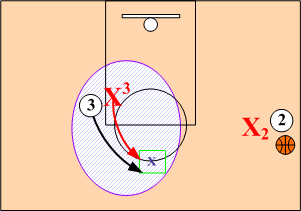
Once the opponent ball cut in blocked, the defender then assumes a strong pass denial position forcing the cutter to the top of the circle pushpoint.
Back to Player Defensive Skill Development - Click Here
Return to Player Development - Click Here
Return to Defensive Strategies - Click Here
Return to HoopTactics - Click Here
© 2026 HoopTactics All Rights Reserved.
